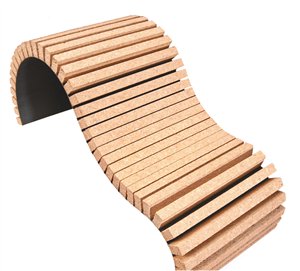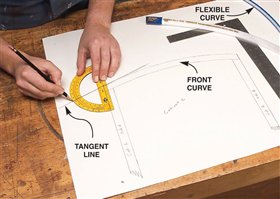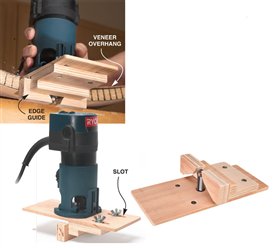We may receive a commission when you use our affiliate links. However, this does not impact our recommendations.
Making Curved Doors
Kerfkore flexible panels
handle curves with ease.
By Brad Holden
| Curved doors and panels add elegance to any project, especially kitchen cabinets. Making these complicated parts requires careful planning and building. The task can be made much easier by using a flexible panel product called Kerfkore (see photo, right, top). It follows the same principle that cabinetmakers use when they saw multiple kerfs on the back of a piece of plywood to make it flexible. A disadvantage to this saw-kerfing method is the risk of the face veneer cracking or kinking at the kerfs, spoiling the curve’s smooth surface. Kerfcore’s advantage is that that the kerfing is done for you. Its flexible paper backing provides a smooth surface to attach your veneer. There are several important tricks and techniques
What is Kerfkore?Kerfkore is a very Kerfkore with paper backer on both sides is also Kerfkore comes in 4-ft. by 8-ft. sheets in 1/4-in., 3/8-in., |
Click any image to view a larger version.
Kerfkore flexes Doors made with Kerfkore have |
SourcesNote: Product availability and prices are subject to change. Kerfkore Co., kerfkore.com, 800-637-3539, Kerfkore, 3/4 in. x 4 ft. x 8 ft. single-sided; 3/4 in. x 4 ft. x 8 ft. doublesided. Roarockit, roarockit.com, 416-938-4588, Thin Air Press kit vacuum press, #01301. This story originally appeared in American Woodworker September 2006, issue #123. |
Here are some supplies and tools we find essential in our everyday work around the shop. We may receive a commission from sales referred by our links; however, we have carefully selected these products for their usefulness and quality.






















